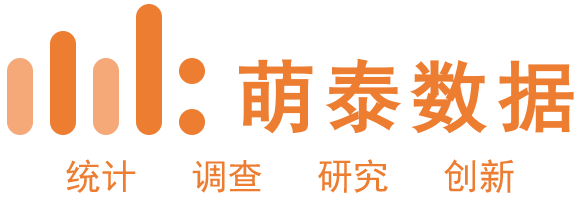全球视野 | The Limits of Social Engineering
- 2016-02-06
- Nicholas Carr
Tapping into big data, researchers and planners are building mathematicalmodels of personal and civic behavior. But the models may hide rather thanreveal the deepest sources of social ills.
In1969, Playboy published a long, freewheeling interview with Marshall McLuhan inwhich the media theoristand sixties icon sketched a portrait of the future thatwas at once seductive and repellent. Noting the ability of digital computers toanalyze data and communicate messages, he predicted that the machineseventually would be deployed to fine-tune society’s workings. “The computer canbe used to direct a network of global thermostats to pattern life in ways thatwill optimize human awareness,” he said. “Already, it’s technologically feasibleto employ the computer to program societies in beneficial ways.” Heacknowledged that such centralized control raised the specter of “brainwashing,or far worse,” but he stressed that “the programming of societies couldactually be conducted quite constructively and humanistically.”
Theinterview appeared when computers were used mainly for arcane scientific andindustrial number-crunching. To most readers at the time, McLuhan’s words musthave sounded far-fetched, if not nutty. Now they seem prophetic. Withsmartphones ubiquitous, Facebook inescapable, and wearable computers like GoogleGlass emerging, society is gaining a digital sensing system. People’s locationand behavior are being tracked as they go through their days, and the resultinginformation is being transmitted instantaneously to vast server farms. Once wewrite the algorithms needed to parse all that “big data,” many sociologists andstatisticians believe, we’ll be rewarded with a much deeper understanding ofwhat makes society tick.
Oneof big data’s keenest advocates is Alex “Sandy” Pentland, a data scientist who,as the director of MIT’s Human Dynamics Laboratory, has long used computers tostudy the behavior of businesses and other organizations. In his brief butambitious new book, Social Physics, Pentland argues that our greatly expanded abilityto gather behavioral data will allow scientists to develop “a causal theory ofsocial structure” and ultimately establish “a mathematical explanation for whysociety reacts as it does” in all manner of circumstances. As the book’s titlemakes clear, Pentland thinks that the social world, no less than the material world,operates according to rules. There are “statistical regularities within humanmovement and communication,” he writes, and once we fully understand thoseregularities, we’ll discover “the basic mechanisms of social interactions.”
Pentland’sidea of a “data-driven society” is problematic. It would encourage us tooptimize the status quo rather than challenge it.
What’sprevented us from deciphering society’s mathematical underpinnings up to now,Pentland believes, is a lack of empirical rigor in the social sciences. Unlikephysicists, who can measure the movements of objects with great precision,sociologists have had to make do with fuzzy observations. They’ve had to workwith rough and incomplete data sets drawn from small samples of the population,and they’ve had to rely on people’s notoriously flawed recollections of whatthey did, when they did it, and whom they did it with. Computer networkspromise to remedy those shortcomings. Tapping into the streams of data that flowthrough gadgets, search engines, social media, and credit card payment systems,scientists will be able to collect precise, real-time information on thebehavior of millions, if not billions, of individuals. And because computersneither forget nor fib, the information will be reliable.
Toillustrate what lies in store, Pentland describes a series of experiments thathe and his associates have been conducting in the private sector. They go intoa business and give each employee an electronic ID card, called a “sociometricbadge,” that hangs from the neck and communicates with the badges worn bycolleagues. Incorporating microphones, location sensors, and accelerometers,the badges monitor where people go and whom they talk with, taking note oftheir tone of voice and even their body language. The devices are able to measurenot only the chains of communication and influence within an organization butalso “personal energy levels” and traits such as “extraversion and empathy.” Inone such study of a bank’s call center, the researchers discovered thatproductivity could be increased simply by tweaking the coffee-break schedule.
Pentlanddubs this data-processing technique “reality mining,” and he suggests thatsimilar kinds of information can be collected on a much broader scale bysmartphones outfitted with specialized sensors and apps. Fed into statisticalmodeling programs, the data could reveal “how things such as ideas, decisions,mood, or the seasonal flu are spread in the community.”
Themathematical modeling of society is made possible, according to Pentland, bythe innate tractability of human beings. We may think of ourselves as rationalactors, in conscious control of our choices, but most of what we do isreflexive. Our behavior is determined by our subliminal reactions to theinfluence of other people, particularly those in the various peer groups webelong to. “The power of social physics,” he writes, “comes from the fact thatalmost all of our day-to-day actions are habitual, based mostly on what we havelearned from observing the behavior of others.” Once you map and measure all ofa person’s social influences, you can develop a statistical model that predictsthat person’s behavior, just as you can model the path a billiard ball will takeafter it strikes other balls.
Decipheringpeople’s behavior is only the first step. What really excites Pentland is theprospect of using digital media and related tools to change people’s behavior,to motivate groups and individuals to act in more productive and responsibleways. If people react predictably to social influences, then governments and businessescan use computers to develop and deliver carefully tailored incentives, such asmessages of praise or small cash payments, to “tune” the flows of influence ina group and thereby modify the habits of its members. Beyond improving theefficiency of transit and health-care systems, Pentland suggests, group-basedincentive programs can make communities more harmonious and creative. “Our maininsight,” he reports, “is that by targeting [an] individual’s peers, peerpressure can amplify the desired effect of a reward on the target individual.”Computers become, as McLuhan envisioned, civic thermostats. They not onlyregister society’s state but bring it into line with some prescribed ideal.Both the tracking and the maintenance of the social order are automated.
Ultimately,Pentland argues, looking at people’s interactions through a mathematical lenswill free us of time-worn notions about class and class struggle. Political andeconomic classes, he contends, are“oversimplified stereotypes of a fluid andoverlapping matrix of peer groups.” Peer groups, unlike classes, are defined by“shared norms” rather than just “standard features such as income” or “theirrelationship to the means of production.” Armed with exhaustive informationabout individuals’ habits and associations, civic planners will be able totrace the full flow of influences that shape personal behavior. Abandoninggeneral categories like “rich” and “poor” or “haves” and “have-nots,” we’ll beable to understand people as individuals—even if those individuals are no morethan the sums of all the peer pressures and other social influences that affectthem.
Replacingpolitics with programming might sound appealing, particularly given Washington’sparalysis. But there are good reasons to be nervous about this sort of socialengineering. Most obvious are the privacy concerns raised by collecting evermore intimate personal information. Pentland anticipates such criticisms by arguingfor a “New Deal on Data” that gives people direct control over the informationcollected about them. It’s hard, though, to imagine Internet companies agreeingto give up ownership of the behavioral information that is crucial to theircompetitive advantage.
Evenif we assume that the privacy issues can be resolved, the idea of what Pentlandcalls a “data-driven society” remains problematic. Social physics is a variationon the theory of behavioralism that found favor in McLuhan’s day, and itsuffers from the same limitations that doomed its predecessor. Defining socialrelations as a pattern of stimulus and response makes the math easier, but itignores the deep, structural sources of social ills. Pentland may be right thatour behavior is determined largely by social norms and the influences of our peers,but what he fails to see is that those norms and influences are themselves shapedby history, politics, and economics, not to mention power and prejudice. Peopledon’t have complete freedom in choosing their peer groups. Their choices areconstrained by where they live, where they come from, how much money they have,and what they look like. A statistical model of society that ignores issues ofclass, that takes patterns of influence as givens rather than as historicalcontingencies, will tend to perpetuate existing social structures and dynamics.It will encourage us to optimize the status quo rather than challenge it.
Politicsis messy because society is messy, not the other way around. Pentland does acommendable job in describing how better data can enhance social planning. Butlike other would-be social engineers, he overreaches. Letting his enthusiasmget the better of him, he begins to take the metaphor of “social physics” literally,even as he acknowledges that mathematical models will always be reductive. “Becauseit does not try to capture internal cognitive processes,” he writes at onepoint, “social physics is inherently probabilistic, with an irreducible kernelof uncertainty caused by avoiding the generative nature of conscious humanthought.” What big data can’t account for is what’s most unpredictable, andmost interesting, about us.
编者注:以上文章是著名学者Nicholas Carr对AlexPentland 教授的关于大数据的新书《Social Physics: HowGoodIdeas Spread—TheLessons from a New Science》的评论,该书对大数据、社会网络、社会物理学有精彩的阐释,由Penguin Press在 2014 年出版。

